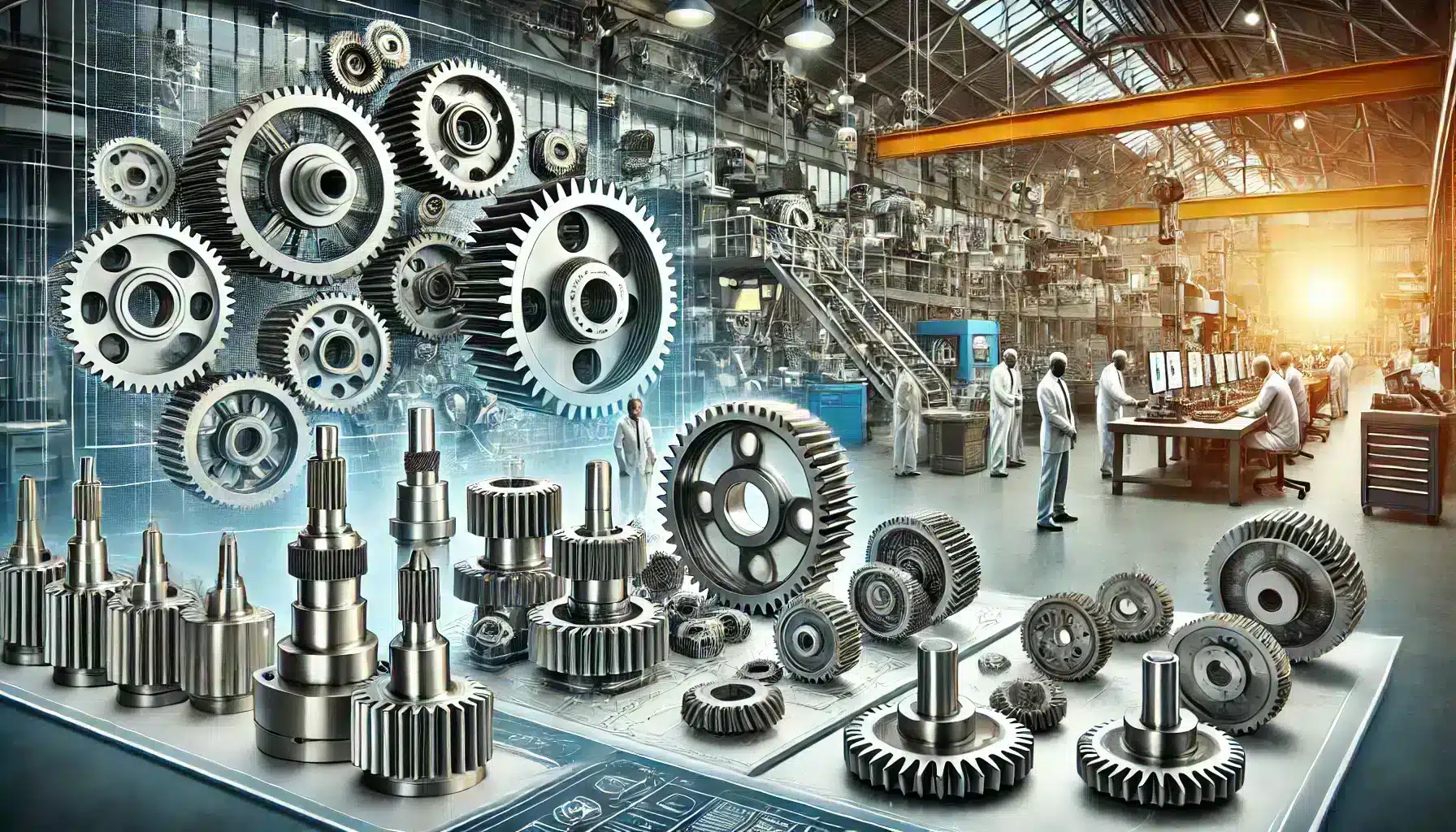Gear manufacturing has long been a cornerstone of industrial machinery, automotive engineering, aerospace applications, and beyond. The evolution of technology has drastically transformed the industry, ushering in advancements that enhance precision, efficiency, and sustainability.
- The Role of Technology in Modern Gear Manufacturing
Technology plays a critical role in redefining gear manufacturing processes. From computer-aided design (CAD) software to automation and robotics, these advancements allow manufacturers to achieve higher levels of precision, faster production rates, and reduced material waste. By integrating advanced technologies, companies can meet the demands of modern industries that require impeccable quality and performance.
- Additive Manufacturing (3D Printing) for Custom Gears
Additive manufacturing, commonly known as 3D printing, has opened new avenues for custom gear production. This technique enables the creation of complex geometries that were previously unattainable using traditional methods like hobbing or shaping.
Advantages of Additive Manufacturing:
- Faster prototyping and production cycles.
- Reduction in material waste.
- The ability to produce lightweight gears with complex internal structures.
- Customization at scale for niche applications.
This technology is particularly beneficial in aerospace industries where weight reduction and precision are critical.
- Computer-Aided Design and Simulation
Modern gear manufacturing begins with robust design software. CAD tools allow engineers to create detailed models, while computer-aided engineering (CAE) and simulation tools predict how gears will perform under real-world conditions.
Key Benefits:
- Early identification of potential flaws.
- Optimization of gear designs for specific applications.
- Streamlined collaboration across teams using digital twins.
This digital-first approach reduces errors and shortens the time to market.
- CNC Machining and Automation
Computer Numerical Control (CNC) machining is a cornerstone of modern gear production. CNC machines ensure high precision and consistency across large production volumes.
Innovations in CNC Machining:
- Multi-axis machining centers for producing complex gear profiles.
- Integration with IoT for real-time monitoring and predictive maintenance.
- Robotic automation to enhance speed and reduce human error.
Automation, coupled with CNC, also allows for the efficient handling of high-strength materials, such as advanced alloys and composites, used in demanding applications.
- Advanced Materials in Gear Manufacturing
The choice of materials has a significant impact on gear performance. Recent developments in materials science have led to stronger, lighter, and more durable materials that extend the lifespan of gears.
Popular Advanced Materials:
- Titanium alloys for aerospace applications.
- Carbon fiber composites for lightweight yet strong gears.
- High-performance plastics for low-noise applications in consumer goods.
By combining these materials with advanced manufacturing techniques, manufacturers can tailor gears for specific performance criteria.
- Heat Treatment and Surface Engineering
Heat treatment and surface engineering are critical processes in gear manufacturing that enhance durability, wear resistance, and performance.
Technological Advancements:
- Laser hardening for precise and localized surface treatment.
- Plasma nitriding to improve wear resistance and reduce friction.
- Cryogenic treatment to increase toughness and fatigue life.
These methods ensure that gears can withstand extreme conditions without compromising their structural integrity.
- Sustainability in Gear Manufacturing
Sustainability is becoming a central focus in the manufacturing industry, and gear production is no exception. Companies are investing in eco-friendly practices to reduce their carbon footprint.
Sustainable Practices:
- Use of energy-efficient machines.
- Recycling of scrap materials.
- Adoption of biodegradable lubricants during machining processes.
These measures not only contribute to environmental conservation but also align with regulatory requirements and consumer expectations.
- Artificial Intelligence and Machine Learning
AI and machine learning are revolutionizing quality control and predictive maintenance in gear manufacturing.
Applications of AI:
- Real-time defect detection using computer vision systems.
- Optimization of machining parameters to improve efficiency.
- Predictive analytics for maintenance scheduling, reducing downtime.
By leveraging AI, manufacturers can enhance production accuracy while minimizing operational costs.
- Industry 4.0 and IoT Integration
The integration of Industry 4.0 principles and IoT technology has transformed traditional manufacturing into smart manufacturing.
Features of IoT-Enabled Gear Manufacturing:
- Real-time monitoring of production lines.
- Automated supply chain management.
- Enhanced traceability and data-driven decision-making.
These advancements ensure greater transparency and control over the entire production process.
- Challenges and the Road Ahead
Despite the numerous innovations, the gear manufacturing industry faces challenges such as high initial costs for advanced machinery, the need for skilled labor, and evolving customer demands. However, continued investment in research and development, along with collaborations between academia and industry, promises to overcome these hurdles.
Future Trends:
- Wider adoption of hybrid manufacturing techniques combining traditional and additive methods.
- Development of smart materials with adaptive properties.
- Greater emphasis on digital twins for end-to-end optimization.
Conclusion
Innovations in gear manufacturing are paving the way for a new era of precision engineering. By embracing technologies such as additive manufacturing, CNC automation, AI, and IoT, the industry is not only meeting current demands but also preparing for future challenges. These advancements ensure that gear manufacturers remain competitive while delivering products that meet the highest standards of quality and performance. As technology continues to evolve, gear manufacturing will undoubtedly play a pivotal role in driving industrial progress across sectors.
